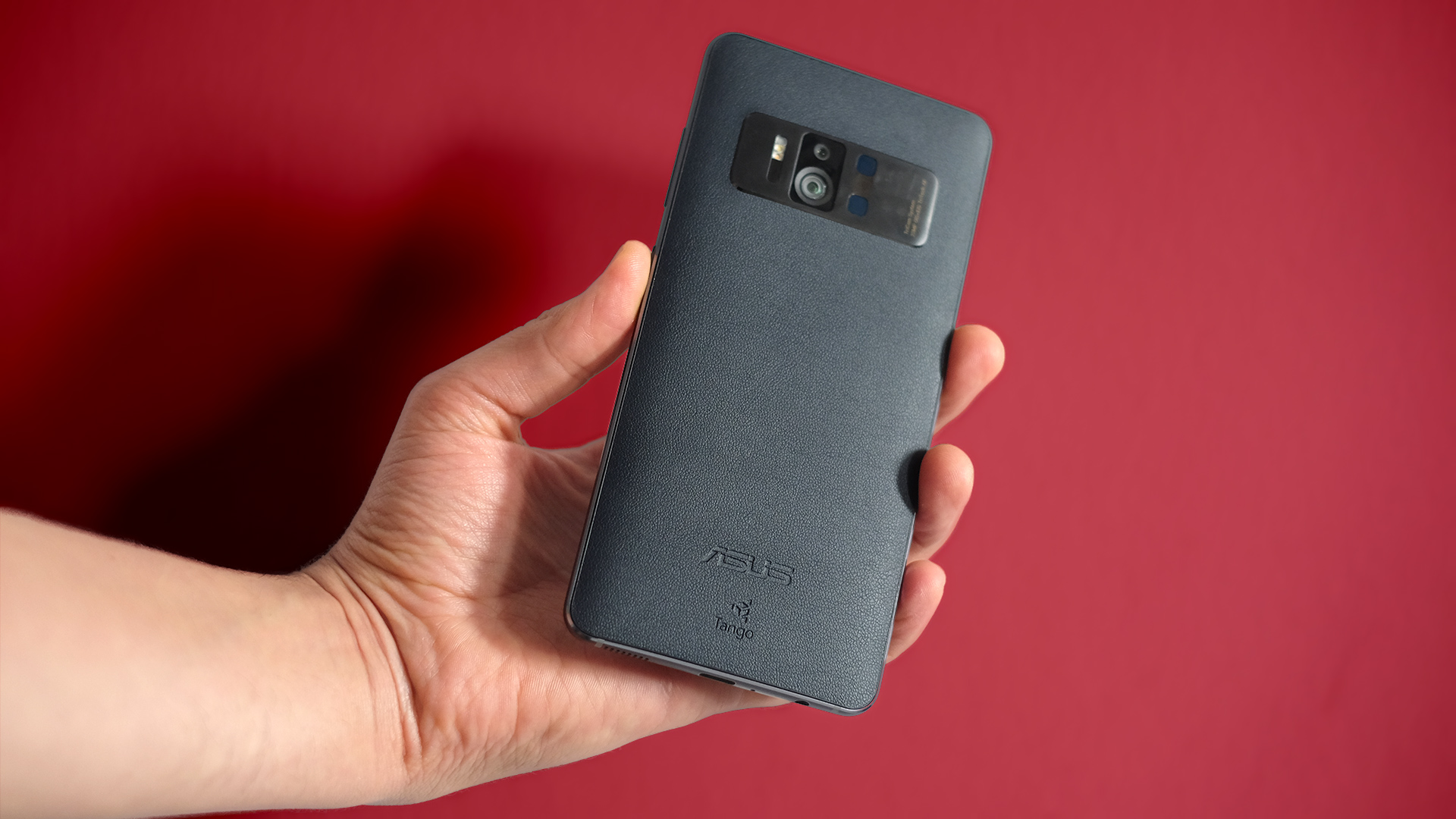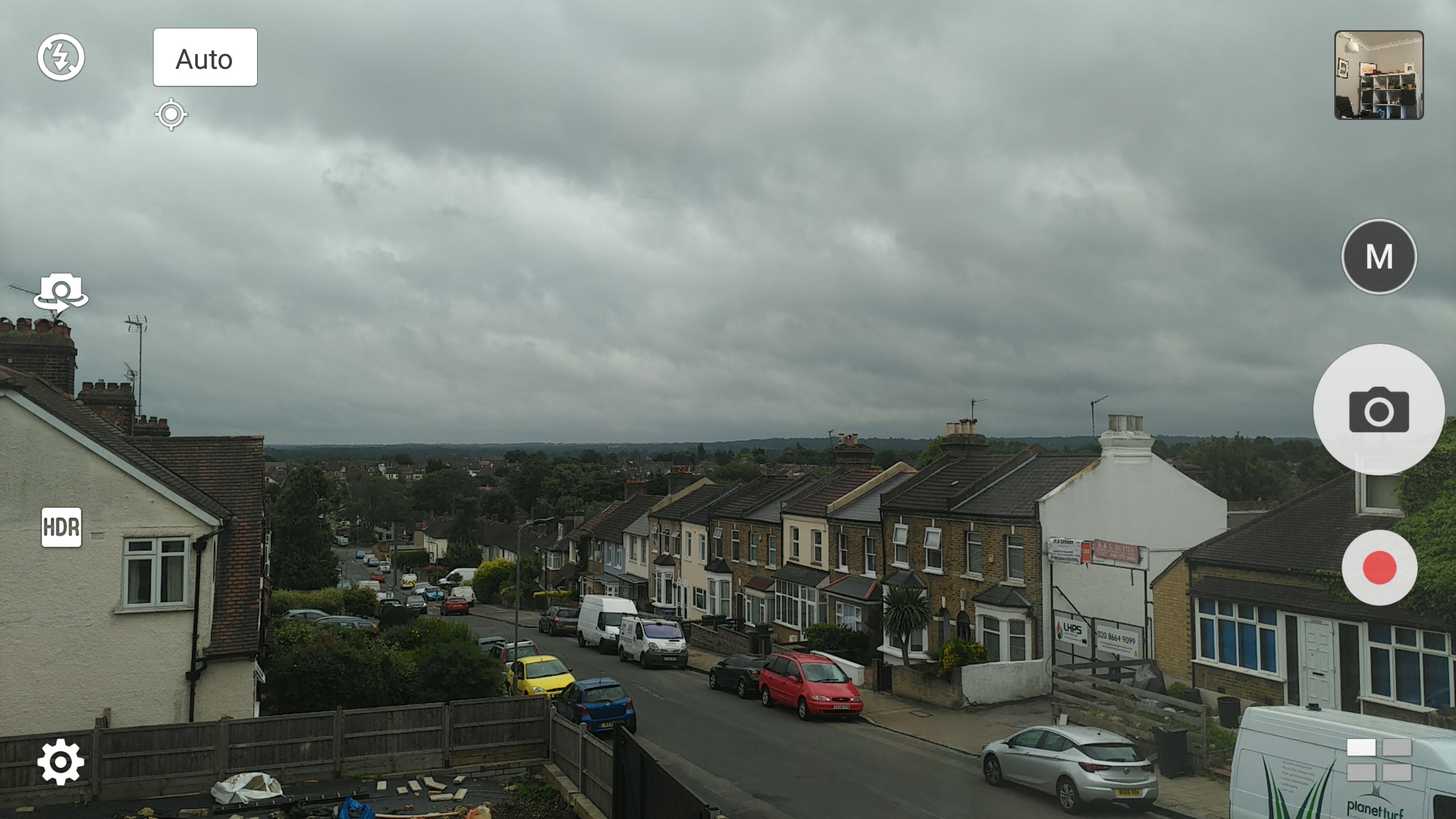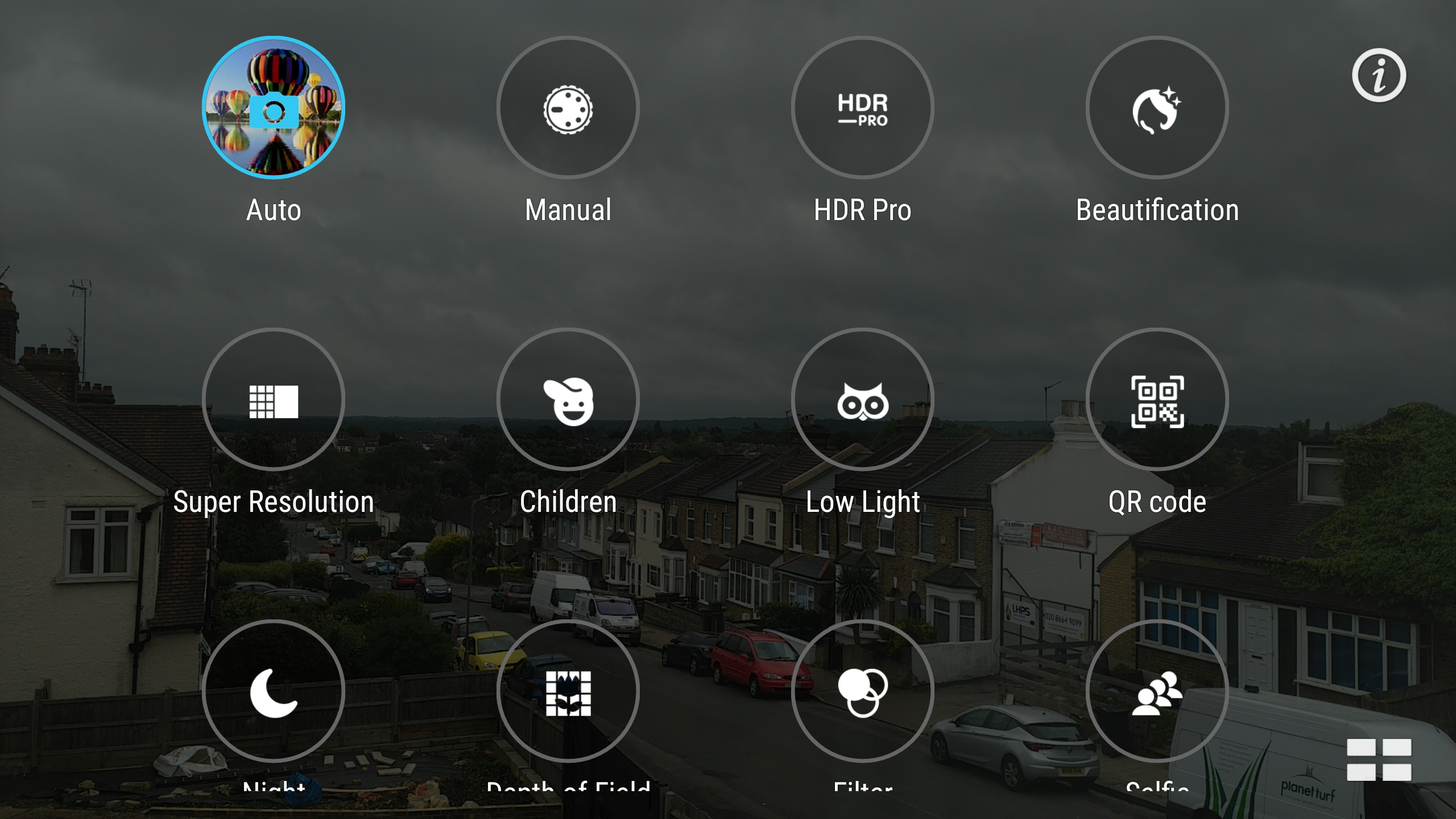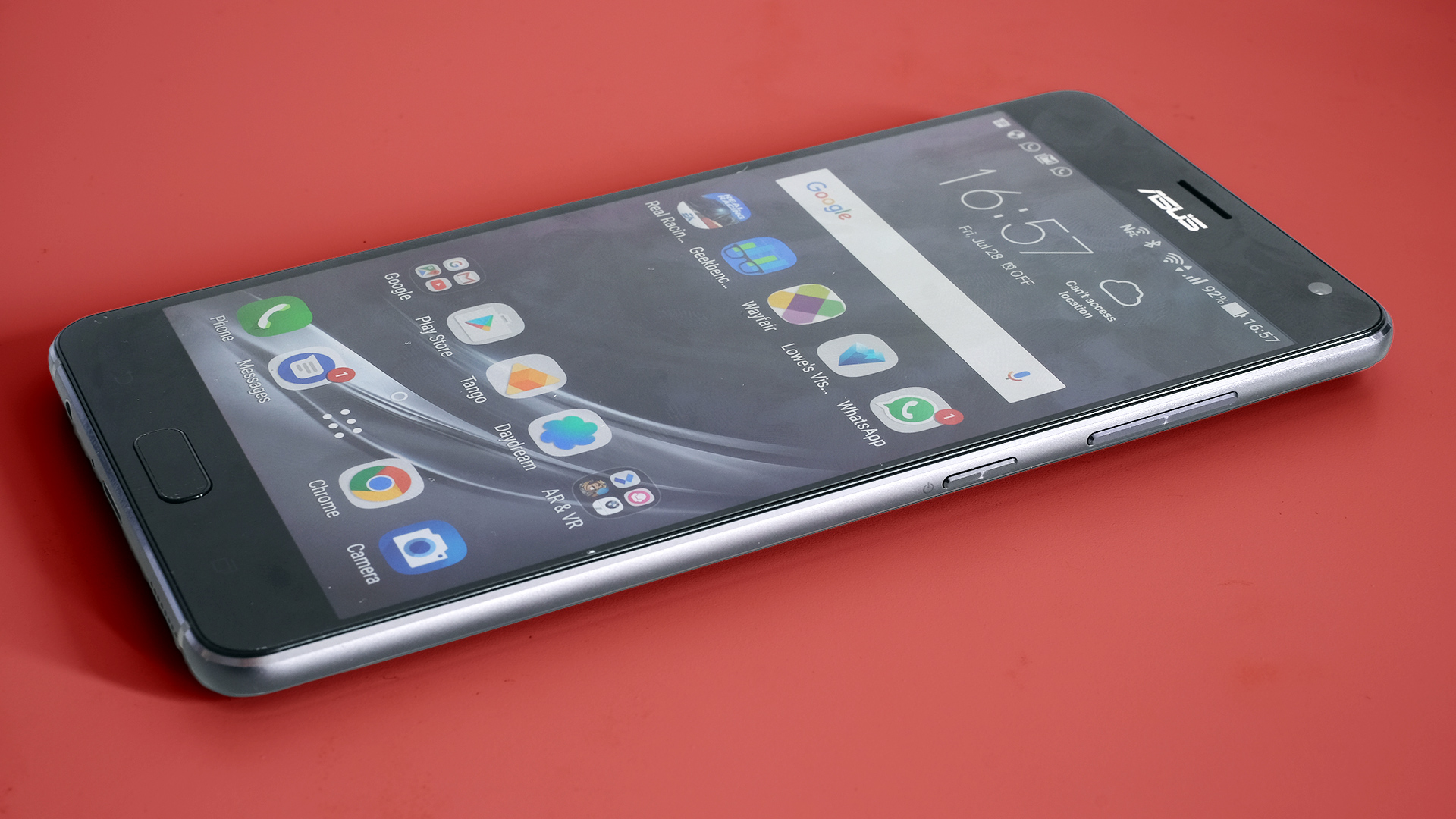Why you can trust TechRadar
Battery life
- Somewhat poorer battery life than its rivals
- Fast USB-C charging
The Asus Zenfone AR has a 3,300mAh battery. As usual for a new high-end phone, you can’t remove it and it’s speedily charged using a USB-C port on the bottom.
That’s only a little smaller than the 3,500mAh battery of the Samsung Galaxy S8 Plus, but the Asus Zenfone AR’s stamina isn't great. It’s not bad either though. It’s fine, and will get you through a day’s use as long as you don’t spend too much time listening to podcasts, or Spotify, or do a lot of gaming.
90 minutes of video playback with the brightness set to maximum takes 20% off the battery. The Samsung Galaxy S8 Plus lost just 11% in the same test, the LG G6 14%, despite using the same CPU.
It seems clear old hands like Samsung and LG use battery-saving smarts Asus doesn’t. There is a Power Saver app that helps you drag out the battery life, but it uses classic battery-saving moves rather than ones that don’t impact your use.
For example, the Power Saving mode stops network access after the phone has been asleep for a while. Super Saving disables network access and only lets basic apps like SMS and the alarm work when the screen is off. They’re compromised ways to prolong battery life.
Camera
- Very versatile high-resolution camera
- Quick and feature-packed
- Tri-camera setup not used well for photos
The Asus Zenfone AR has a rear camera with seriously impressive-sounding specs. It has a tri-camera setup on the back led by a 23MP main camera, a Sony IMX318. As it’s a 4:3 shaped sensor, you’ll actually take 16MP shots if you shoot widescreen.
Top features of the camera include optical image stabilization for good low-light photo quality and a super resolution mode that merges several exposures to make a huge 92MP image.
Let’s start with the basics, though. For the most part, the Asus Zenfone AR camera is quick to shoot and fun to use. When you shoot in HDR shots take a little longer to take, but not to the extent it seems you’re being held back by the processing tax.

Shots look punchy and bold, with good dynamic range when using the standard Auto HDR Mode and powerful, mostly-natural color. The Samsung Galaxy S8 is better at dynamic range optimization, but the Zenfone AR fares better than the Sony Xperia XZ Premium.
With close-up shots, the Asus Zenfone AR also has rather nice bokeh (background blur) from its f/2.0 lens, even if others are wider. That’s without any software trickery, just the natural character of the lens.
Detail is excellent too, although when you look close you do see the cost of having rather small sensor pixels (1 micron across), which is what you get when you pack a lot of megapixels into a 1/2.6-inch sensor.
Tight-packed textures like grass start looking like an oil painting when you zoom right into the pixels and the fine detail in macro images appears slightly grainy or dithered.
This is the effect of the image processing making up for the fact the Galaxy S8 has 50% larger photosites, the little light-sensitive parts of a camera that take in light to make up a photo. However, images look better than those of the Sony Xperia XZ Premium, which suffers from similar but uglier pixel-level fizz.
It doesn’t get dramatically worse as the light level decreases, in part thanks to optical image stabilization (OIS). Asus says the phone has 4-axis stabilization, although this is part of the Sony IMX318 sensor rather than something special to Asus. Some of Sony’s compact system cameras have 5-axis stabilization.
The Asus Zenfone AR’s is not as good, but still effective. You can shoot handheld with an exposure of 1/2 a second and get sharp results. Most non-OIS phones don’t dare to let the shutter speed go below around 1/10 of a second on Auto, and even then it can be tricky to get pics pin-sharp.

In other words, the Asus Zenfone AR has what we need for high-quality night shots. However, unlike top-end Samsung phones it doesn’t tend to push the OIS to the max to keep the ISO sensitivity low, and therefore avoid noise. There is a Low Light mode that does this, but you have to switch to it manually.
That said, we’re pleasantly surprised by night photo quality even when the Auto mode takes control. Detail levels are impressive, contrast is good and OIS makes it easy to get sharp results. Still, for the best results you’ll want to use the Manual mode and switch the settings to suit the occasion.
The Asus Zenfone AR has one of the easiest-to-access manual modes around, with a little M button that sits just above the shutter. It’s great, not least because it also has a level indicator to let you know if your horizon is straight. You can even slow the shutter speed down to 32 seconds.
Just like feature-packed ZenUI, the camera app is fat with features. And, again like ZenUI, most of them are hidden until you open up the mode menu. Standard shooting is clean and quick, featuring just basics like HDR and the flash toggle.
Let’s dig into some of the extra modes. The most attention-grabbing is 92MP Super Resolution, which merges four photos to produce a huge image. It takes a little white to process one of these, but you don’t have to keep the Asus Zenfone AR still the whole time.
Looking between a standard shot and one of these supercharged ones, the mode doesn’t actually add lots more detail, but is rather good at reducing the grainy noise that comes with indoor shooting.
It’s not so much a 92MP photo collage as a kind of informed smoothing. There’s a dead giveaway too: these ultra-resolution images often take up fewer megabytes than a standard one.

HDR Pro is another mode that promises a little more than it delivers, turbo-charging the HDR effect to increase color potency and mid-tone detail. In almost all cases, though, standard HDR shots look significantly better and HDR Pro doesn’t reduce highlight clipping.
Other modes include the slightly creepy Children mode, which lets you attract their attention with a sound effect and then takes a pic when it recognizes a smile, and the now-common Depth of Field.
A complete failure to make use of the Asus Zenfone AR’s hardware, this doesn’t actually use the triple camera to detect the depth of a scene, instead using the low-fi approach of taking multiple photos with different points of focus.
It’s no surprise, then, that the results are rubbish compared with those of the iPhone 7 Plus or the latest Huawei/Honor phones. Most of these modes are clearly just part of the ZenUI software package, not anything specific to the Asus Zenfone AR.
Unlike Asus’s lower-quality phones, the Zenfone AR can shoot 4K video, though. There’s also electronic (software) image stabilization for video.
The phone’s front 8MP camera is rather good, capturing quite a lot of fine facial detail without too much grain or over-processing.
That said, if you like your selfies processed to the max there’s an advanced beautification mode that lets you break down how bulged-out your eyes are, how sucked-in your cheeks look and even the shade of virtual blush to put on your cheeks.
Camera samples












Current page: Battery life and camera
Prev Page What’s it like to use? Next Page Verdict and competitionAndrew is a freelance journalist and has been writing and editing for some of the UK's top tech and lifestyle publications including TrustedReviews, Stuff, T3, TechRadar, Lifehacker and others.

